WHAT’S OUT THERE IN THE WORLD OF COOL


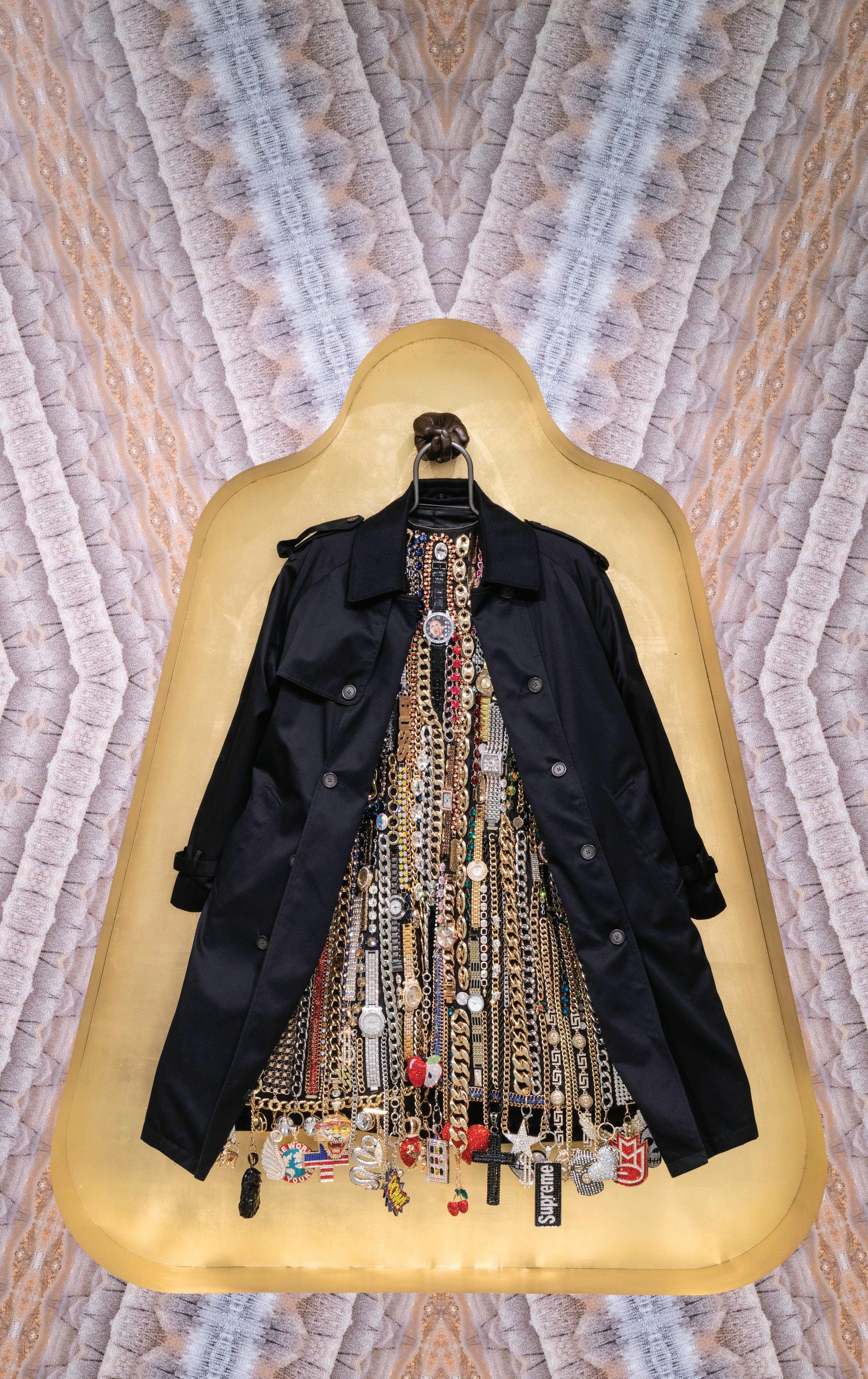
A WELSPUN SIGHTS AND SOUNDS BIANNUAL | 03.2023
∞∞∞∞∞ #OMG! ∞∞∞∞∞∞∞ ∞∞∞ #howdidtheydothat? ∞∞∞∞ ∞∞∞ #mouthagape ∞∞∞∞∞∞ ∞∞∞∞∞∞∞∞∞∞ #OMG! ∞∞ ∞∞∞∞ #howdidtheydothat? ∞∞∞ ∞ #mouthagape ∞∞∞∞∞∞∞∞




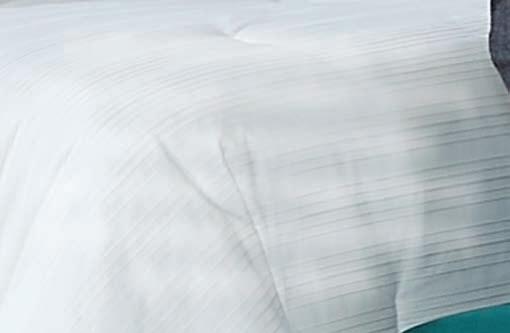

C Y CM MY CMY K


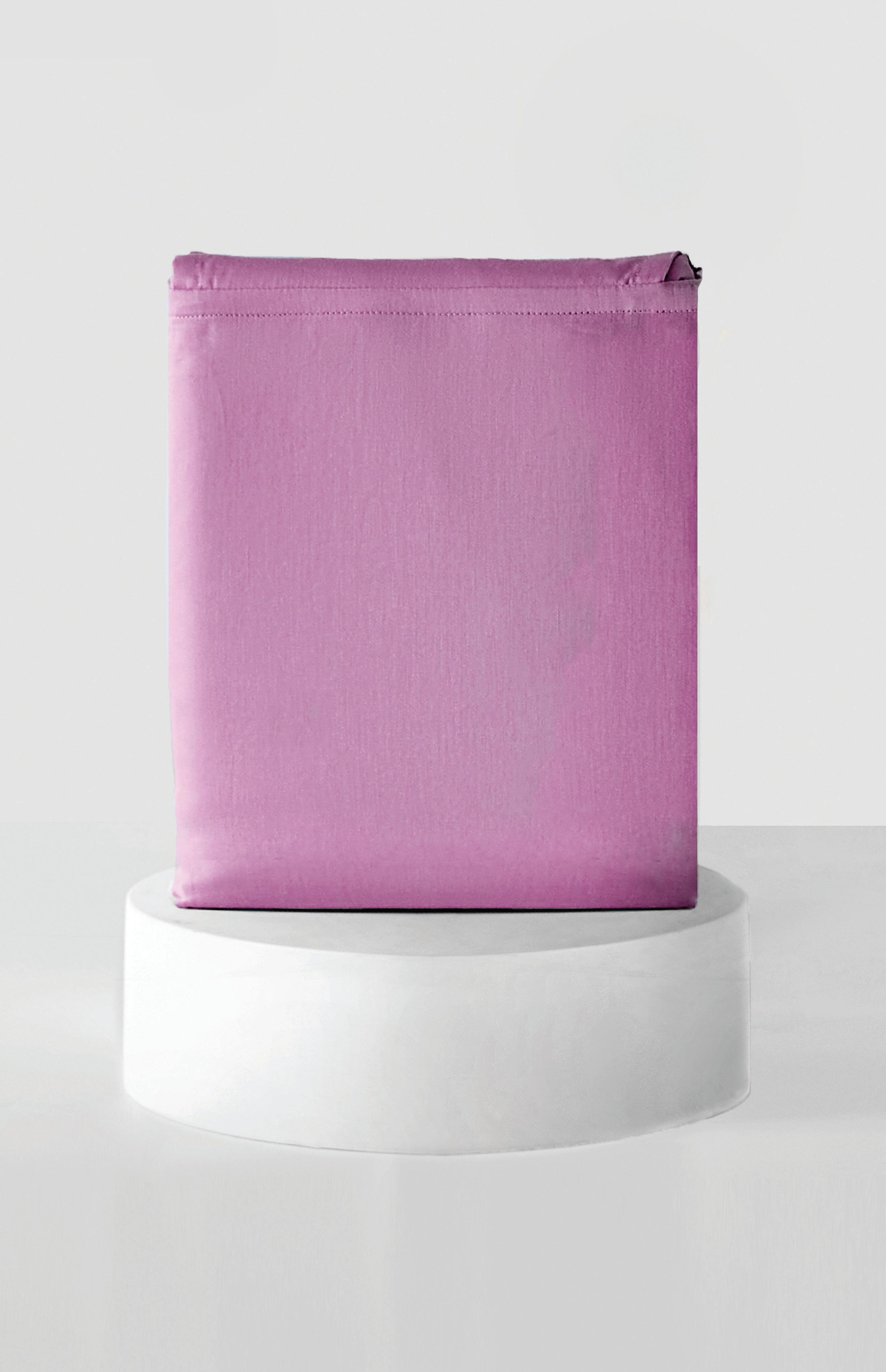














INTRODUCING



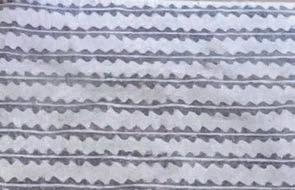









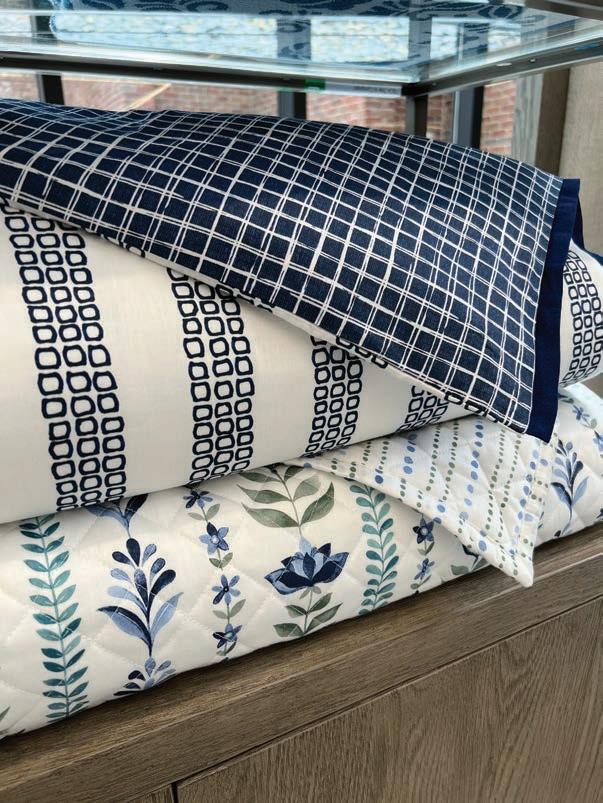
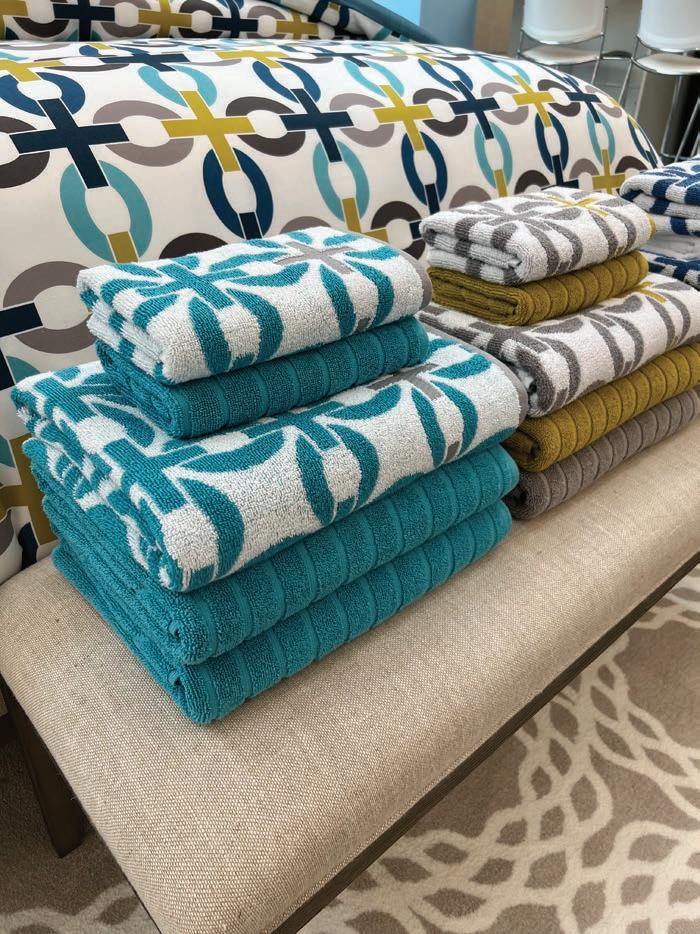




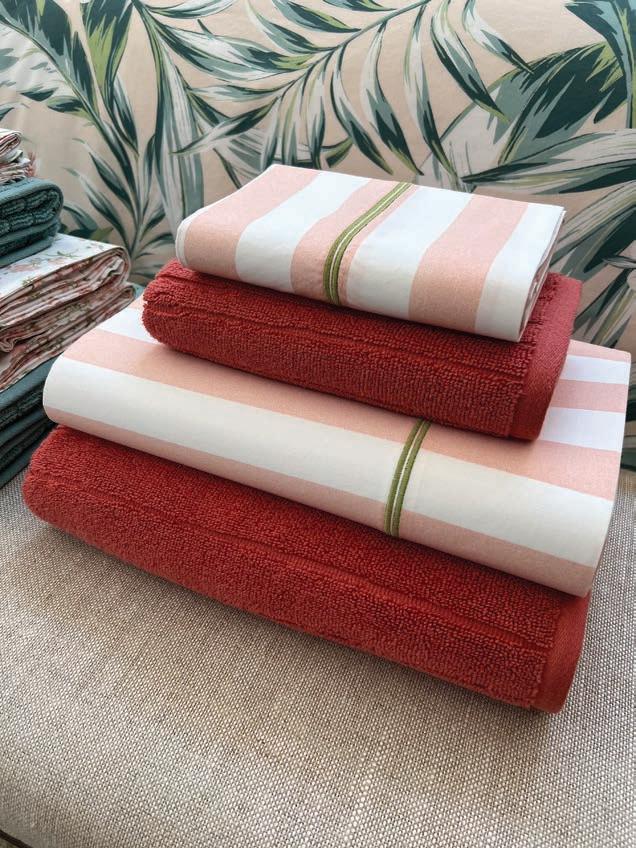



WELCOME
A NOTE FROM THE EDITORS OF WELSPOTTED, A WELSPUN SIGHTS & SOUNDS MONTHLY










The term magnum opus literally means “a large and important work of art, music, or literature, especially one regarded as the most important work of an artist or writer.” While we think every one of our WelSpotted issues is the best one yet, we’re particularly proud of this one, which we started to call our #OMG issue when it was in its early stages. This idea grew as we were launching our IG account @welspotted just after Thanksgiving, in order to give you, Dear Readers, a thrice-weekly shot-in-the-arm of WelSpotted goodness. (So we hope you’re on the socials, following along.) While picking out Monday-Wednesday-Friday goodies and tidbits that delight us, we found our editorial team was ferociously DM’ing back and forth. “Did you see this? OMG!” or “OMG, look at this!” and in the midst of that perfect storm of #mouthagape, the Magnum Opus issue was born.
Put it another way: we hate the word “awesome,” because it’s overused and we can’t help but wince when we stumble upon some listing on eBay, say, that describes a beautiful 10-inch knickknack as “Awesome Murano glass vase.” A Murano vase is not awesome. The Grand Canyon is awesome. The Pyramids are awesome. Get it? So, we’ve intentionally veered away from hackneyed words that have been appropriated and watered down to a mushy verbal sludge, focusing instead on whatever gives us that punchin-the-gut feeling. Like, hold onto your hats! Clutch your pearls! The mind boggles!
So enjoy this, our Magnum Opus issue. In planning it, we thought fondly of Sex and the City and what Samantha proclaimed in the first film, when she arrived at Carrie’s apartment while the heroine was supposed to be packing up her EPIC wardrobe on the eve of her wedding. Armed with a bottle of champagne in each hand, the Glamazon told the iconic girl gang that a full review of Carrie’s wardrobe needed to happen, since Carrie was the ultimate Fashionista and “attention must be paid.” We couldn’t agree more. Get ready, here we go!
A WELSPUN SIGHTS & SOUNDS MONTHLY

CHRISTOPHER MOONEY EDITOR-IN-CHIEF
ABBE ARONSON CONTENT CREATOR


GREGORY MONFRIES CREATIVE DIRECTOR
SHARLENE BREAKEY EDITOR

MARY BONANNO, ISOBEL MODICA , MICHELE MANDATO
WELSPUN CREATIVE TEAM
WELSPUN, 10 WEST 33RD ST.
SHOWROOM: PENTHOUSE, MAIL: STE. 1221
NEW YORK, NY 10001
INSIDE
HASHTAG COLOR FANTASY TREND
RETAIL INNOVATION
LUXURY APPAREL
SOCIALMEDIA DESTINATION
AMPERSAND
FOR MORE, GO TO: WELSPOTTED.COM
Artist Ken Kelleher creates fantastical sculptures in digital world public spaces. “Sculpture, for me, is an inquiry into the deep mysterious nature of things.” Image courtesy of the artist.
ON THE COVER Nick Cave, Hustle Coat, 2021. Bronze, found textiles, and found metal objects, 59 × 41 × 16 in. (149.9 × 104.1 × 40.6 cm). Presented on Wallwork (designed in collaboration with Bob Faust), 2022. Courtesy the artist and Jack Shainman Gallery, New York. © Nick Cave.
 Photo: Midge Wattles. © Solomon R. Guggenheim Foundation, NewYork
Photo: Midge Wattles. © Solomon R. Guggenheim Foundation, NewYork
DON’TDELETEART
Censorship makes our blood boil, so we stand up and applaud Don’t Delete Art, a not-for-profit project that aims to draw attention to the damage done when social media companies censor art and to work towards greater protection of artistic expression across platforms. DDA is very much in the news today, because Meta (owner of Facebook and Instagram) has announced it is revisiting its policy on art censorship—a move that was no doubt spurred by DDA and the #freethenipple campaign. This particular body part has been blurred or blacked out on women/females on social media with alarming regularity, yet not covered on men/males, much to the outrage of many, including artists whose social media accounts have been suspended or removed entirely as “punishment.” And lest you assume this is an issue only for XXX imaging or porn posts, consider the fact that some of the most beloved and well-known paintings that hang on museum walls also have been needlessly censored in this manner. DDA is a collaboration between artist-activists, art collectors, and human rights organizations brought together by the National Coalition Against Censorship in March 2020. Founding members (and artists) Savannah Spirit and Spencer Tunick have been joined by arts writer Emma Shapiro, who, we hear, has a book in the works, documenting the infuriating and almost comically puritanical restrictions placed on artists today. So #mouthagape, we stand with you!


SAM’SSWEATERS
Sam Barsky—oh, Sam Barksy!—how do we love you? Let us count the ways in knits and purls. This IG sensation (with 218K followers) is known for knitting sweaters that depict scenery and landmarks from around the globe. Photographed in his masterpieces, often in front of the site of interest and with his adoring wife Deborah at his side, Sam has been knitting since 1999. He says it takes him about a month to create each sweater and that he doesn’t use patterns, charts or graphs. Sadly for his fans, Sam also does not sell the sweaters (don’t even ask, we’ve begged). That said, he does sell irresistible reproductions on adult and doll-sized t-shirts via his website. And for a pay-as-you-wish sum, Sam also creates custom videos, in which he will sing happy birthday to a loved one or friend while wearing his own birthday sweater. Sam says his purpose is to spread joy. #OMG we couldn’t agree more.


STREETSCAPES BY JJ THE AWFUL
AJ The Awful, a.k.a., AJ Riccio, is an artist and designer, who wears a few different design hats, but has become widely known for her RIDICULOUSLY detailed black-and-white pen-and-ink illustrations that amplify ordinary streetscapes into fine-art snapshots of urban living. Based in Astoria, Queens, AJ includes all kinds of locales in her work: new establishments, old haunts, a combo of well-known and off-the-beaten path places. Her annual printed calendar has become so popular that the community gift shops and home stores who stock it tell us that customers start asking for it before Thanksgiving. It’s become somewhat of a “who will AJ feature this year?” guessing game—until the wait is over and a flip through the pages reveals such images as the Neptune Diner (David Bowie and Catherine Deneuve hung out here during the filming of The Hunger) or the Powhatan Democratic Club (incorporated 1900). Fans say that AJ’s work inspires them to look at their beloved neighborhood with new perspective, and for that we proclaim #attentionmustbepaid.

OGEE! #OMG!
Is she, or isn’t she? And for that matter, what about him or them? Contour kits seem to be sweeping the beauty/wellness world, offering a just-back-from-vacation glow or the slept-for-10-hours skin-of-a-newborn lewk. For the uninitiated, these makeup sticks create enhanced or slimmed down facial features, like sharper cheekbones, using shadow and light. Around our editorial office, especially at deadline, glamor tends to take a backseat to grammar, but more than a few of our team members say they won’t leave the house without a contour stick (or three) in hand. Our fave? The OGEE collection, certified organic, cruelty-free, not tested on animals, gluten-free, all natural, and GMO-free. Oh, and made in the U.S.A. It’s effortless and gives you that “no make-up” makeup look that seems so fresh and NOW. We look good, we feel good, so we say “OGEE! #OMG!”


NEXT!
The other side of #OMG, like, the, #meh side. Madonna bashing re: her face work. Madonna can do whatever she wants.
#everyone’sdoingit









COLOR
English physicist Sir Isaac Newton is credited with discovering color when, in the 1660s, he experimented with sunlight and prisms and demonstrated that clear white light was composed of seven visible hues: red, orange, yellow, green, blue, indigo, and violet. Newton also noted that in the spectrum, each color bleeds into its neighbor, creating endless colorways—a fact wonderfully apparent in artist Kathleen Ryan’s massive, moldy fruit sculptures. “The sculptures are beautiful and pleasurable, but there’s an ugliness and unease that comes with them,” she said in an interview with the New York Times . While each gem—rich striated emerald green malachite, pale, milky iridescent opal, smoky quartz and others—is hard and lustrous, amassed together they simulate fuzzy colonies of mold— in particular, the garden-variety fungus known as green rot that can be found on food languishing in your crisper or fruit and veggie drawers (that’s Penicillium digitatum to you, Smarty Pants). Ryan starts with a foam base, where she paints “fresh” versus “rotten” areas on the surface. Then she places each gemstone, using an assortment of shapes, sizes, and colors, to emulate “the shift from desirable to disgusting,” rhapsodizes www.colossal.com.
Lemons are a favorite subject, but the artist, New York-based but born in Santa Monica, also creates rotting oranges, pears, cherries, and melons. Kathleen’s work first made the gallery scene a few years back, when “Bad Peach” served as a namesake piece for a group show at the Francois Ghebaly gallery in Los Angeles. The Times , writing about the artist in a feature in T Magazine , notes that the sculptures’ opulence and over-ripeness recall the partially consumed fruit of 17th-century Dutch paintings by masters such as Jan Davidsz de Heem and Willem Claesz Heda. If you’re in a Googling mood, check out Heda’s tablescapes, which are particularly ruinous, and scenes from Heem, which incorporate lush arrangements and…lobsters). We were VERY interested to note that while Kathleen uses dazzling stones to depict the rot in her sculptures, she uses simple glass beads for the pristine parts.


 With titles like “Bad Lemon” and “Fool’s Mold,” the sculptures of artist Kathleen Ryan feature simple glass beads interspersed with semi-precious gemstones, challenging the perceptions of both decoration and decay, in juicy, smack-you-in-the-face color.
With titles like “Bad Lemon” and “Fool’s Mold,” the sculptures of artist Kathleen Ryan feature simple glass beads interspersed with semi-precious gemstones, challenging the perceptions of both decoration and decay, in juicy, smack-you-in-the-face color.
Fa










 At left: A student of Le Corbusier in Paris and Louis Kahn in America, celebrated Indian architect BV Doshi built over 100 projects, from the most luxurious digs to this incredible take on affordable housing, and is widely considered the pioneer of modernist and brutalist architecture in India.
At left: Digital sculptor/artist Ken Kelleher is a MUST FOLLOW on Instagram, under @anchorball. He says of his sculpting method: “The first part of my practice is always experimenting. The second part of my practice is conceiving of pieces I haven’t seen created before.” Beyond the digital world where his monumental pieces reside, real-life public space art is said to be in the works.
Photographer Tommy Kwak’s collection of Miami’s lifeguard stands (available in his new book) showcases these gumdrop structures in their delicious glory, all colorful trim, railings, angles, and roofs. Oh, and by the way? The book’s pages are edged in pink. How’s that for a trip to Fantasyland?
At left: A student of Le Corbusier in Paris and Louis Kahn in America, celebrated Indian architect BV Doshi built over 100 projects, from the most luxurious digs to this incredible take on affordable housing, and is widely considered the pioneer of modernist and brutalist architecture in India.
At left: Digital sculptor/artist Ken Kelleher is a MUST FOLLOW on Instagram, under @anchorball. He says of his sculpting method: “The first part of my practice is always experimenting. The second part of my practice is conceiving of pieces I haven’t seen created before.” Beyond the digital world where his monumental pieces reside, real-life public space art is said to be in the works.
Photographer Tommy Kwak’s collection of Miami’s lifeguard stands (available in his new book) showcases these gumdrop structures in their delicious glory, all colorful trim, railings, angles, and roofs. Oh, and by the way? The book’s pages are edged in pink. How’s that for a trip to Fantasyland?
Reachable only by a staircase in the woods and path with hairpin turns outside Verona, Italy, the Sanctuary of Madonna della Corona’s near inaccessibility has helped preserve the site, which remained almost entirely intact until the 20th century. Now it’s been renovated and slightly enlarged, giving you even more WOW factor!



FANTASY

Take a look at this #mouthagape assortment of places and spaces that are currently blowing our minds. In late January, Balkrishna (BV) Doshi, known as “India’s greatest architect,” died at the age of 95, and among his many projects, Aranya LowCost Housing (pictured at far left) provides dwelling for 80,000 people. Read that again. Heading over to Italy, the Sanctuary of Madonna della Corona is perched just over 2,500 feet (774 meters) above sea level, built into a vertical cliff face. Photographer Tommy Kwak must have seen us coming, because his new book, Lifeguard Towers Miami, just published after a successful Kickstarter campaign, and we are agog at this collection of thirty-plus iconic towers along South Florida’s Miami Beach. Finally, it would be impossible to chat about Fantasy if we didn’t mention Ken Kelleher, a.k.a. @anchorball on IG. His digital sculptures, interiors/ furniture pieces, and fashion items are curiosity brought to life. Amen! Who needs a cold compress after all this?
ntasy






Educating ourselves on the history of miniatures was a delight because, #attentionmustbepaid, this is some fascinating stuff ! Some of the earliest miniatures were created by the Egyptians 5,000 years ago, per www.shopofminiatures. com. Those trendsetting Egyptians—the mind boggles as to how ahead of their time this ancient society really was, huh?—created miniature replicas of boats, animals, furnishings, and even servants. These handcrafted minis were placed in tombs inside the pyramids (as the website points out, it’s an entirely different take on "you can't take it with you”). Dollhouse miniatures got their start about 400 years ago, when so-called “baby houses'' debuted in Europe. Despite their name, these tiny houses were off limits to kids, collectible miniature pieces that featured many fine architectural details and filled with painstakingly crafted furniture. Also known as “cabinet houses,” baby houses became a hit among wealthy patrons in Holland, England, and Germany, and also served an educational purpose: mothers in the 17th century used dollhouses and miniatures to teach their daughters how to maintain a proper home. We’ve been bananas about miniatures since we saw the Thorne Rooms at the Art Institute of Chicago, created by Narcissa Niblack Thorne, who assembled a group of artisans in the 1930s to create intricate rooms on the minute scale of 1:12. More recently, we’ve fallen in love with these incredibly posh miniatures from L.A.-based Chris Toledo and Brits Mulvany & Rogers, the latter of whom has miniaturized many famous buildings in addition to those owned by private clients. We love that Toledo’s finished miniatures are often showcased with whimsical life-sized objects (like a pair of glasses, a bottle of glue, or a pair of scissors) in order to show scale. On the less whimsical side but still fascinating: Google “The Nutshell Studies of Unexplained Death”—macabre pint-sized dioramas we saw some time ago at the Smithsonian that still give us the shivers.
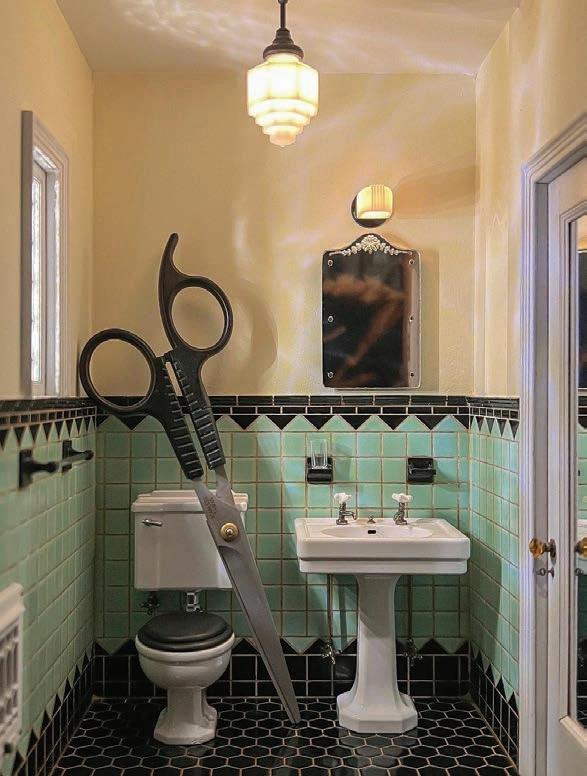
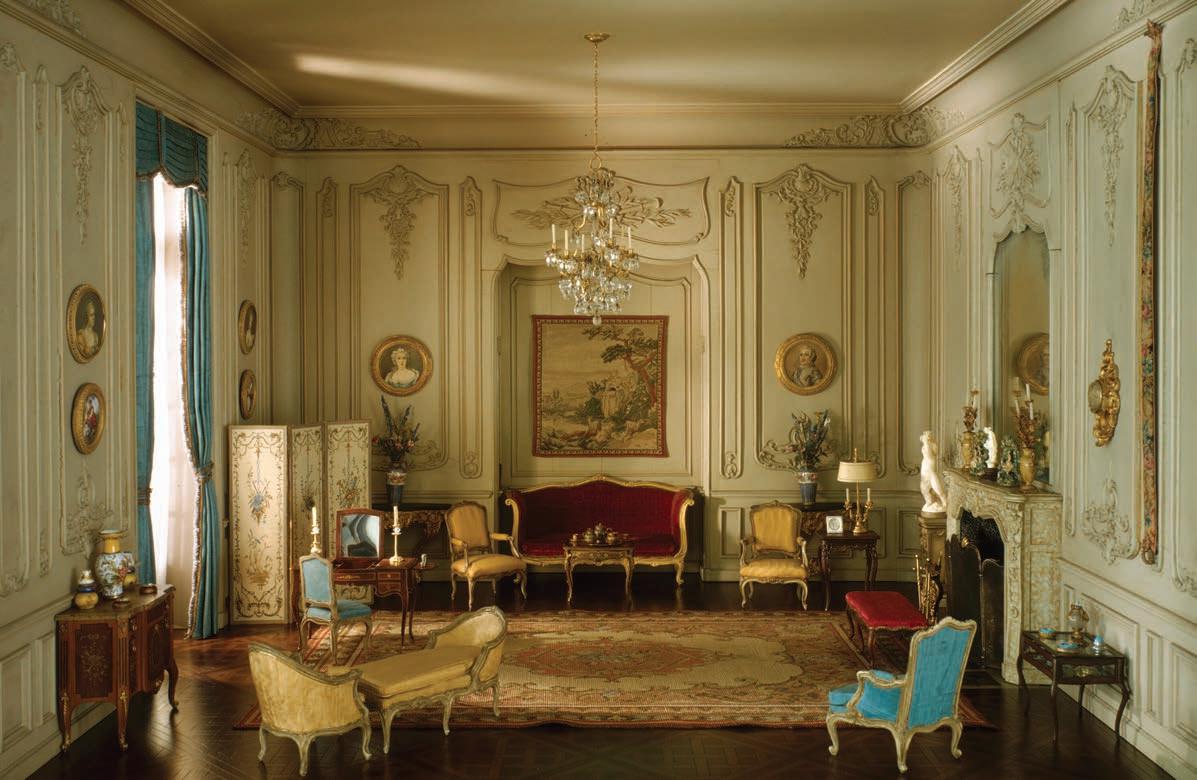

trend E
TREND
Above: One of the 68 Thorne Rooms at the Art Institute of Chicago (this one based on a French boudoir of the Louis XV period, 1740-1760) Below: Chris Toledo, a.k.a. @ibuildsmallthings, offers up early 20th century reproduction miniatures, often shown with household objects like scissors for (1:12) scale.
trend

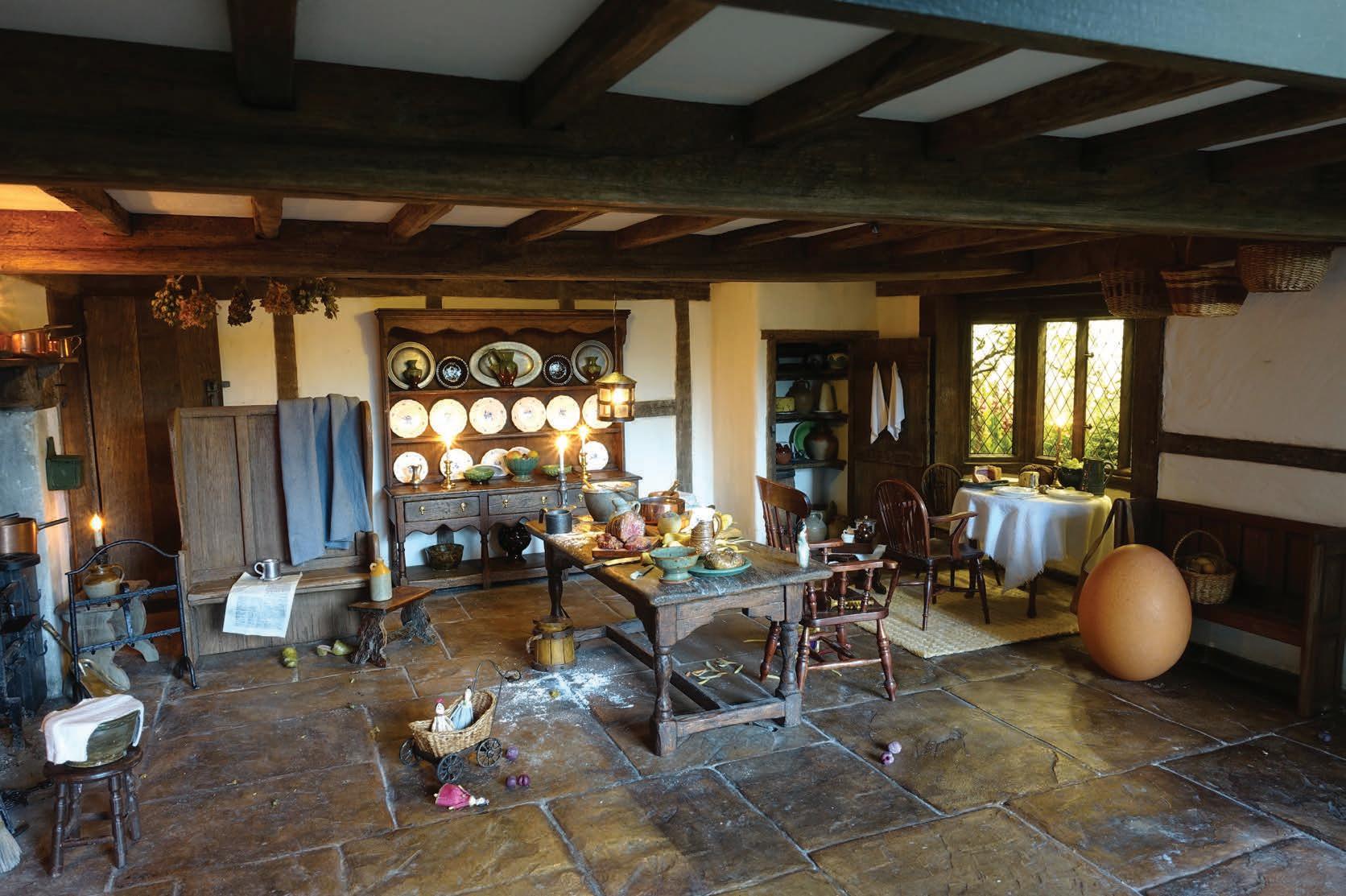 British duo Mulvany & Rogers showcase their master craft in the two miniature kitchens pictured here and below. “We aim to recreate an atmosphere and energy, to give the feeling that someone has only just left the room.”
British duo Mulvany & Rogers showcase their master craft in the two miniature kitchens pictured here and below. “We aim to recreate an atmosphere and energy, to give the feeling that someone has only just left the room.”
A wall of chocolate bars and fresh cut flowers—can you think of anyone who wouldn’t want to shop for themselves or a Dear One in these friendly retail hubs? We hear a new global location is in the works.













RETAIL
What can we say about an indie retail mini-chain that parks its proverbial car in the garage of “salt, chocolate, bitters, and flowers”? Meet me at The Meadow, launched in 2006 and headquartered in Portland, Oregon, with three neighborhood shops and an outpost in New York’s NoLita. (Another location in Tokyo – TOKYO! – sadly closed during the pandemic.) Its mission? To be that little shop that makes your town the place you love to love. Dubbing their salespeople “shop guides,” The Meadow presents what owners refer to as their most prized discoveries: “products that tell stories of tradition, values, pleasure and celebration.” The flagship space is located in the Nob Hill section of Portland, with 400+ chocolate bars in stock; Southeast Portland is the largest of the four spaces, with the most emphasis on pantry items; North Portland is the retailer’s first shop, with the largest collection of salts (the website encourages shoppers to stop by and taste “strange and enticing foods”—love that!); and New York’s NoLita shop is a move across town for The Meadow, which had a spot in the West Village for more than 10 years before relocating in 2021. It seems like even the construction of The Meadow was meant to make it quietly stand out from the masses. The first shop was built out of old-growthDouglas fir andcedar planks reclaimed from old factory buildings, and other buildouts followed suit. Per management, “In 2006nobody thought to build with such materials, and that was thecheapestwood wecould find!The original idea for the shop was to create a place that felt like coming home, surrounded by things wefelt most passionate about: gourmet salt, artisan chocolate, cocktail bitters, wine, and fresh cut flowers.” On its website, find a breakdown of how many kinds of chocolates, salts and bitters are stocked in each brick-and-mortar store, and we advise you don’t shop hungry. Sounds like a fifth location may be in the works, too.



P.S. The retailer’s book Salted: A Manifesto won a James Beard Award! Talk about “The Little #OMG That Could!”
 With three locations in and around Portland, Oregon, and one in New York’s NoLita neighborhood (above), The Meadow has made a business out of selling all manner of salt (including Himalayan salt rounds), chocolate, bitters, and flowers in comfy environments like this.
With three locations in and around Portland, Oregon, and one in New York’s NoLita neighborhood (above), The Meadow has made a business out of selling all manner of salt (including Himalayan salt rounds), chocolate, bitters, and flowers in comfy environments like this.
We’ve written about art in our Innovation section before, for good reason, because art evolves, morphs, and shifts almost daily. Today, art and how it's presented is innovation itself, and a walk through several exhibits currently on display in New York reinforces how it has become a full body experience—#OMG from head to toe. At MoMA, artist Rafik Anadol asks us to ponder, “What would a machine dream about after seeing the collection of The Museum of Modern Art?” He answers with a large-scale installation that uses artificial intelligence to transform the museum’s more than 200 years of work into real time, continuously displaying otherworldly forms that can be viewed from two different floors—a meditation on technology, creativity, and modern art. Anadol trained his machine-learning model to interpret the publicly available data of MoMA’s collection, reimagining it in terms of what might have been and what it could become. Housed in the Museum’s Gund Lobby, the piece is impacted by the shifts in light, movement, acoustics, and weather out the floor-to-ceiling windows.

Meanwhile, the work of Nick Cave, our cover artist, is on display at The Guggenheim, with an exhibit made up of elaborate installations and textile works, including his iconic Soundsuits, which blend sculpture, costume design, and instrument-making. The title of the exhibition, “Forothemore,” is a neologism, a new word that reflects the artist’s lifelong commitment to creating space for those who feel marginalized by dominant society and culture and sort of brilliantly sucks the air out of this dinosaur of an institution, infusing it with blood and guts and life from the street. And speaking of the street, another major exhibition, downtown this time, traces the rise and proliferation of hip-hop through five decades. Titled “Hip Hop: Conscious, Unconscious,” this collection of more than 200 photographs that range from 1972 to 2022 hangs at Fotografiska, our fave new art-gazing spot, where you can stroll cocktail or coffee in hand and DJ-curated music filling your ears, making art just one of the five senses to savor. That is innovation at its FIERCEST. Also well worth seeing at Fotografiska: Un/Masked, from Elizaveta Porodina. The artist, who was a clinical psychologist before teaching herself how to use a camera, explores themes of magic and mirage.
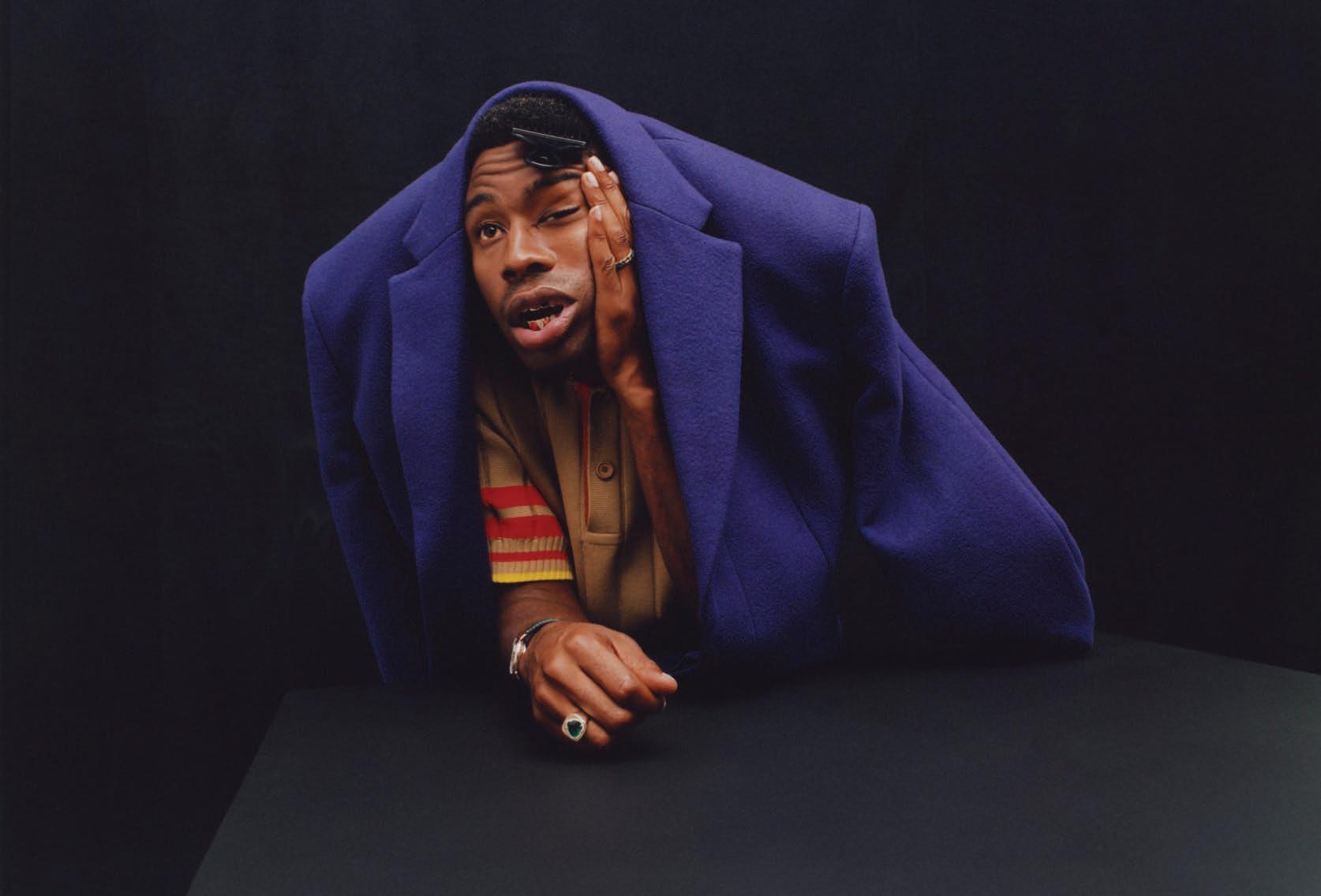

ATION I N N O V ATIO I N N O V
 Clockwise from upper left, here’s a look at the innovativeartwe love right now.
Clockwise from upper left, here’s a look at the innovativeartwe love right now.
I N N O V A T I O
2022 - Campbell Addy - Tyler, The Creator posing for WSJ Magazine at Fotografiska; Elizaveta Porodina - He Kong (2020), also at Fotografiska; Rafik Anadol 2022 Unsupervised at MoMA; Nick Cave Forothemore at The Guggenheim
INNOVATION
INNOVATION
Mural art causes a bit of a back-and-forth tennis-tournament type of conversation in the contemporary art world. Detractors insist that murals should take a back seat to canvas, while staunch supporters remind us that these large-scale works are imperative to bringing art to the public and making people more aware. In public works, murals have been employed to liven up areas of urban blight and function as outdoor art museums (the Wynwood Mural tour in Miami comes to mind). Their sheer size makes murals an ideal communication tool for political statements or social commentary. But let’s turn a luxuriously languid eye to the world of fine-art murals, and those commissioned for upscale restaurants and private homes. We SWOON over the murals behind the bar at Le CouCou and Veronika, both in New York City, so imagine our delight to find out they were both done by the same fine-arts decorative painter, Dean Barger, out of Maine and in conjunction with design studio Roman and Williams. For Le Coucou, the hand-painted mural was based on the work of 18th Century French landscape painter Hubert Robert. At Veronika, a restaurant housed inside the Fotografiska Museum, a mystical bohemian forest landscape mural sets the tone for a sexy sip or two. (See Innovation for more on what’s currently hanging on those walls.) Barger and his team are available to transform your home into a divine setting, offering decorative installations in the form of murals, of course, but also floor and ceiling finishes, gilding, and more. In an interview with “Stylish With Jenna Lyons,” the artist shed this insight on how he usually begins his work, whether for commercial or private clients (the latter of which are naturally hush-hush, so use your imagination): “I work to create a faraway point of infinity, some distant misty part of the mural that draws the view into the wall. I like my murals to recede back, dematerializing the space rather than jumping off the walls screaming for attention.” We call that quiet opulence, and we whisper #attentionmustbepaid.
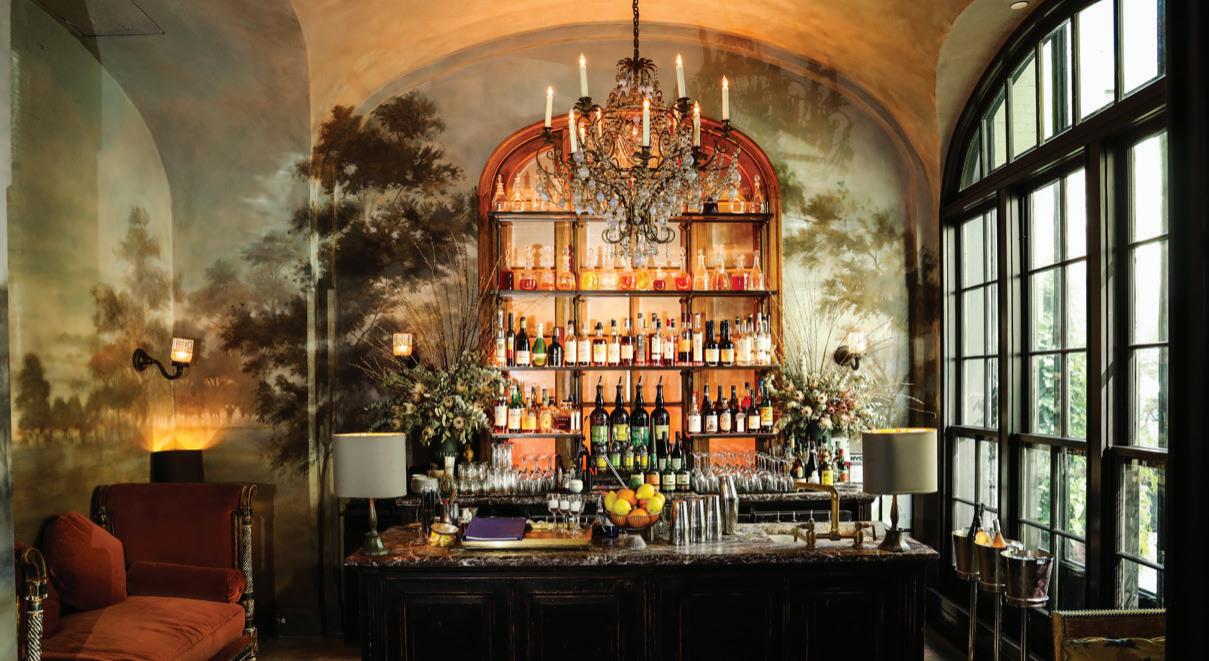
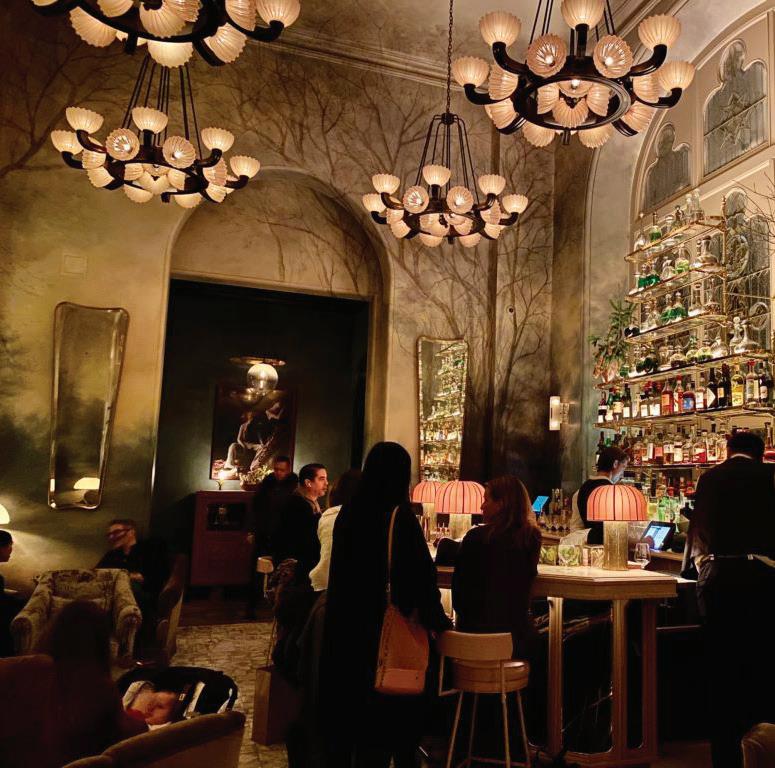
 This page, top to bottom: We’re bananas for Dean Barger’s wall murals, shown here at Le CouCou and Veronika. Opposite page: a private client install shows a mural is more than wallpaper and a helluva lot more #OMG than even the freshest paint job.
This page, top to bottom: We’re bananas for Dean Barger’s wall murals, shown here at Le CouCou and Veronika. Opposite page: a private client install shows a mural is more than wallpaper and a helluva lot more #OMG than even the freshest paint job.

LUXURY
a PP arel









Love it or hate it, what came down the runways at the Paris S/S 2023 shows certainly grabbed our attention, to say nothing of the insanely creative glamor of show attendees Erykah Badu (pink) and Doja Cat (red).

APPAREL
“So, do you want to call this apparel feature ‘Paris Gone Bonkers?’ asked our editor-in-chief at our most recent issue review meeting. Um, yes. YES, WE DO. The Paris Spring/Summer 2023 shows were awash with the most jaw-dropping fashion we’ve seen in years, some of it tongue-in-cheek and some doing its rightful job of slapping us out of our winter slumber. Let’s begin with Viktor&Rolf’s “absurd take” (their words) on the stereotypical ball gown for the 21st century. Offering an assortment of dreamy, romantic tulle gowns, the design duo literally turned haute couture on its head, separating body from dress and allowing the garment to retain its idealized shape while “antagonizing, alienating, and freeing itself” from the models. Reviews were mixed on whether the Dutch fashion house was joking or descending into madness, but those who loved the collection of eighteen gowns REALLY loved it. “Haute Couture is supposed to make us think,” said one of the gushers online. “Why am I alone in loving this? It’s meant to be surreal. This feels so fun and fantastical to me, no one is supposed to WEAR it, LOL.” Meanwhile, at Dior, artistic director Kim Jones went all out, taking masculine tailored looks in grays, pastels, and everything in between, and pumping them up with glittery embellishments and feminine flair. For the men’s show, the air was scented with Lily of the Valley, because it “called to mind a symbolic and timeless bridge between nature and culture.” Off the runway, show attendees were intent on making their own kind of magic. We were particularly stunned at the Schiaparelli Haute Couture show, when Doja Cat appeared in head-to-toe red, covered with makeup and more than 30,000 Swarovski crystals applied by hand to her person. At Valentino, Erykah Badu, who’s also on the March cover of Vogue, was a vision in pink. The magazine captioned the four-time Grammy winning singer, “Radical, Relevant, Real”—now that is top-billing #OMG right there! Oh, and as if we weren’t #OMG’ing enough, at press time, we were DAZZLED to hear that Pharrell Williams was just named new Men’s Creative Director at Louis Vuitton.
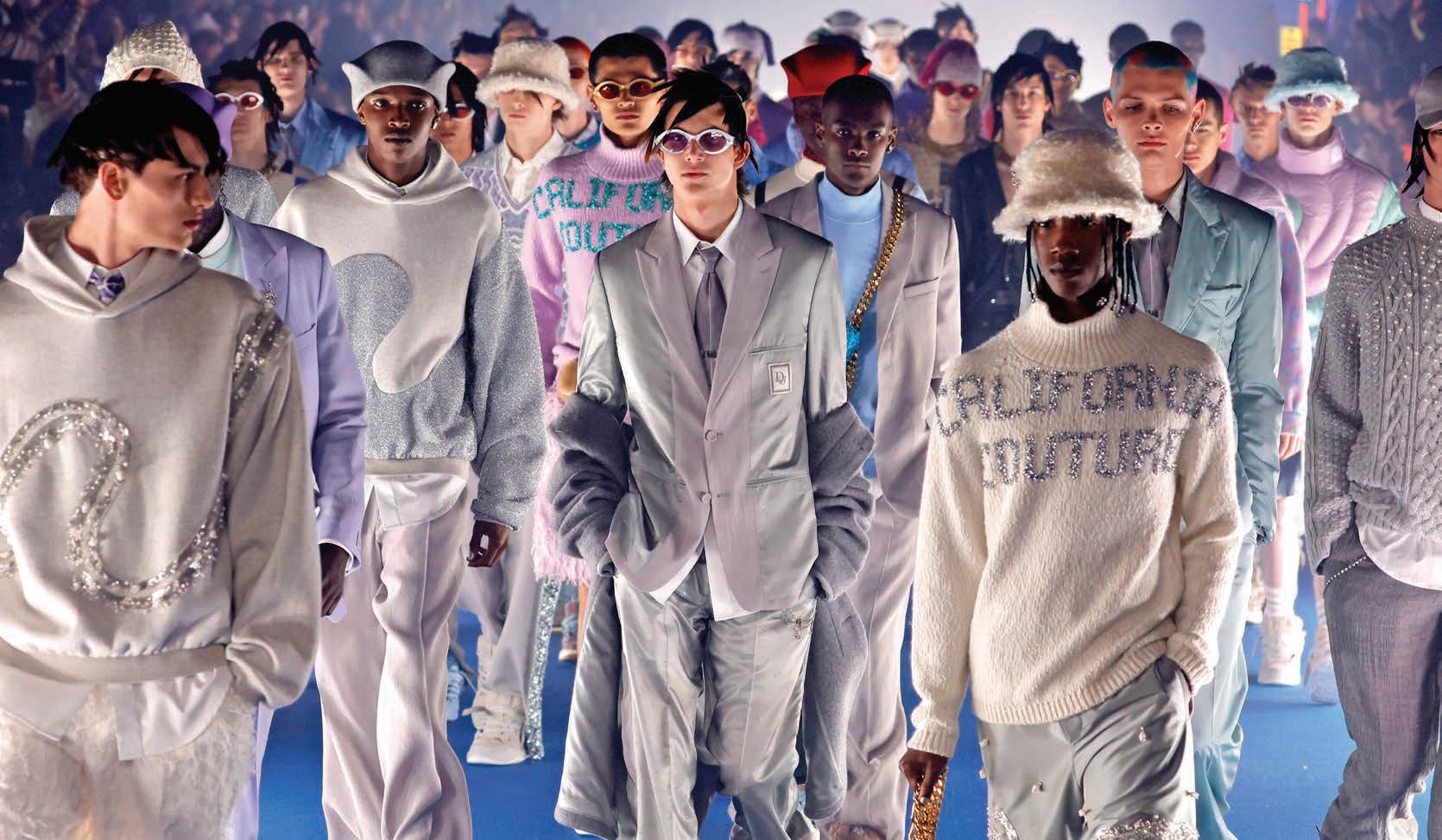

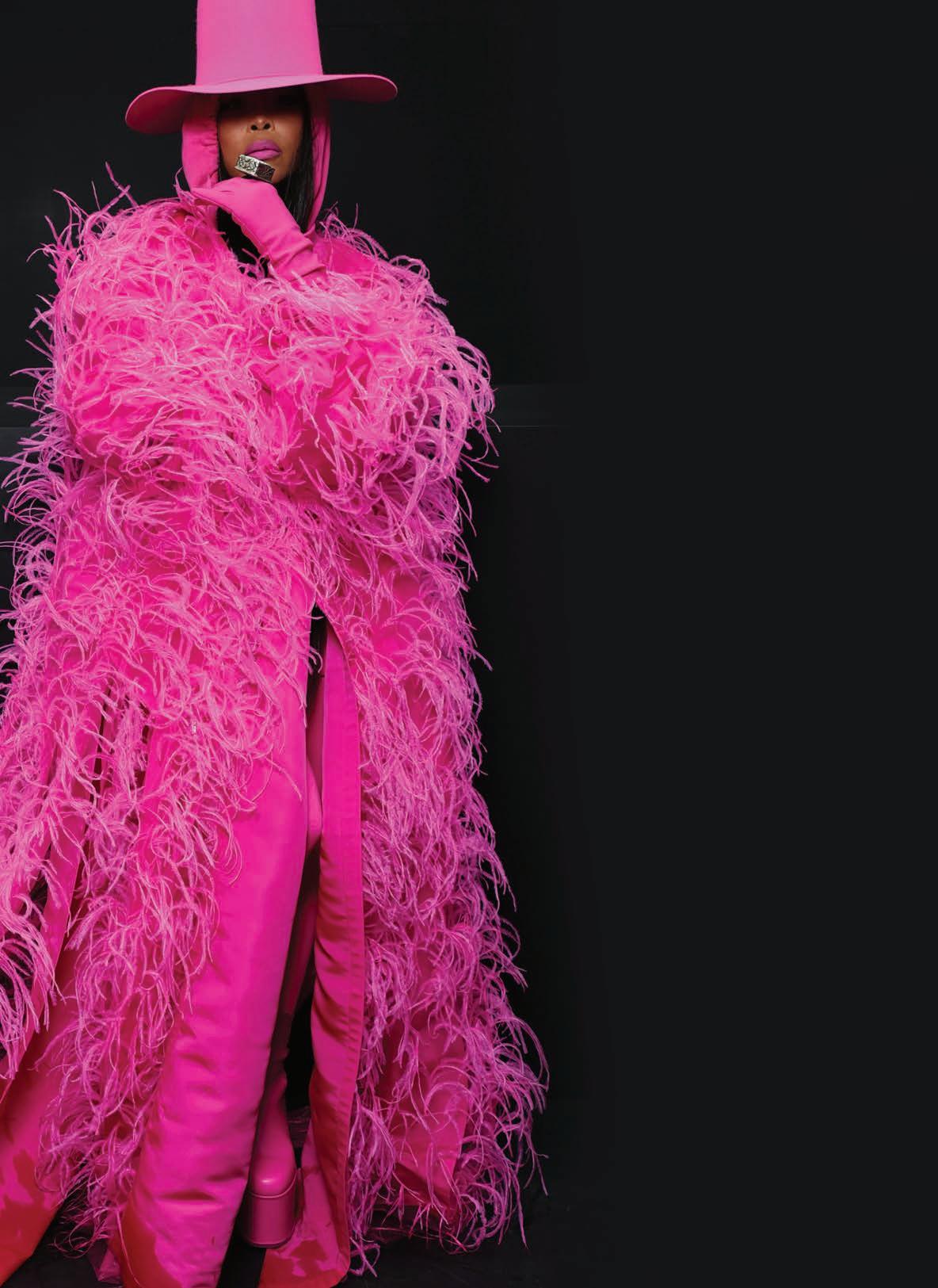
Well, well, well…WelSpotted has its own IG account. We thought it was “time,” don’t you? So take a moment to follow us at @welspotted! Now, modesty prevents us from blowing up this spread with only our own posts, so we thought we’d share some other gems that have our mouths agape. Ready? Let’s begin with perennial Savvy Siter, Rima Suqi, who stole our hearts with New York Magazine’s Best Bets and continues to provide some of the most gorgeous content around. Next up, hearts melt and eyes pop at Tanja Brandt’s animal photography, @tanja_brandt, particularly doggo Ingo and his owl-y pals. We never can get enough of the Quann sisters, natural hair enthusiasts, activists, and YouTube stars Cipriana @ciprianaquann and TK Wonder @tk_wonder. The Steven Arnold Archive, @stevenarnoldarchive, is the out-of-this-world collection of the work of this artist. A homemade house on Cape Cod takes our breath away at @oldsilvershed, for both comfort chic and those views. Finally, we get a weird thrill every time we wander through Jason Baker’s shots of abandoned buildings and institutions; @jasonbakerphotography and we promise you won’t be able to tear yourselves away.




SOCIALMEDIA
@RIMASUQI
@TK_WONDER AND @CIPRIANAQUANN
@STEVENARNOLDARCHIVE






 From left to right, a few of Rima Suqi’s recent IG images (this being a hotel/guest house in Portugal, Casa na Terra). Below, the dark, captivating, and splendid squalor of Jason Baker’s shots on his IG highlight lost locales.
From left to right, a Steven Arnold print from his collection. The artist fashioned most of the props etc. for his shoots himself from household items, paper, and cardboard; TK Wonder and Cipriana, AKA, the Quann sisters; Tanja Brandt’s dog Ingo and a pal.
@TANJA_BRANDT
@JASONBAKERPHOTOGRAPHY
From left to right, a few of Rima Suqi’s recent IG images (this being a hotel/guest house in Portugal, Casa na Terra). Below, the dark, captivating, and splendid squalor of Jason Baker’s shots on his IG highlight lost locales.
From left to right, a Steven Arnold print from his collection. The artist fashioned most of the props etc. for his shoots himself from household items, paper, and cardboard; TK Wonder and Cipriana, AKA, the Quann sisters; Tanja Brandt’s dog Ingo and a pal.
@TANJA_BRANDT
@JASONBAKERPHOTOGRAPHY
Des tina tion


ContentCreator note: our own SHARLENE BREAKEY recently resorted (Look! We made up a chic new word) at Palm Heights and were so taken with it, we asked her to submit a field report—because #attentionmustbe paid with proper credit to those who swooned!







This new little hotel on Grand Cayman is so quietly, comfortably fabulous, when we were whisked away here, we hardly knew whether to shout #OMG or whisper #attentionmustbepaid. Palm Heights was opened in 2019 by Gabriella Kahlil, a designer looking to recapture the laid-back, glamorous soul of a ’70s Caribbean estate. It’s no surprise her success is in the details. The fifty suites are full of thoughtful amenities like a well-stocked detox/retox bar (so you can wake to a fresh brewed pour-over after ending the day sipping the good stuff). A straw bag and towel hang by the door, making it easy to slide out to your happy place—a private stretch of sand and sea where marigold beach umbrellas bloom in the sun. Everything is a feast for the eyes—even the servers, whose Emily Bode outfits make you wish you were wearing one. But for all the understated luxury, it’s the unique focus on culture that demands #OMG. There are books everywhere, and we’re not talking beach reads. The Art of Drag, Margeila the Hermes Years, Andy Warhol Polaroids—the estate has amassed a mind-boggling collection, called libraryfetishdotcom, of art, design, and photography titles. In the guest lounge and elsewhere, they complement an impeccable display of furniture and objets d’art that include vintage Mario Bellini sofas and Ingo Maurer fans sourced from far flung places like Paris flea markets and Mexico City and L.A. Yet the thoroughly modern Palm Heights is in no way stuck in the past. Going out of its way to foster the current generation of creators, the hotel’s Estate Residency Program offers stays to those who want to explore some aspect of Caribbean culture, and their work is woven into guests’ day to day. Translation: there is always something cool going on. Collabs also include wellness, so, yes, there’s a spa and spectacular gym, but also classes run by guest hosts (like the trainers from The Ness). All of which explains why Palm Heights has already been proclaimed “the best” by Vogue and CN Traveler and become the darling destination of media/design/creative types. Somebody, please, whisk us away again…




T
tina
Clockwise, from top left: a soaking tub on a suite terrace; Coconut Club’s cocktails transform golden hour into happy hour; a Metafora coffee table and Lella & Massimo Vignelli sofa set form one comfy corner in the guest lounge; the emerald library beckons on the path to the beach.
DESTINATION
I ❤ 747






We’ve unofficially decided that our Ampersand section also functions as an In Memoriam to all the GOATS, and here’s a doozy: The last Boeing 747 has left the factory. With its distinctive “hump,” the plane, nicknamed “Queen of the Skies,” is perhaps the most widely recognized commercial airline ever built. Since making its debut more than half a century ago, the workhorse has carried passengers and cargo around the world, transforming air travel and becoming a symbol of American ingenuity. As reported in The New York Times, the 747 is composed of about six million parts produced around the globe, with final assemblage in Everett, Washington, home of Boeing. The factory






has been used to make newer model planes, of course, but remained home to the 747 down to this, the final number 1,574. Please observe a moment of #attentionmustbepaid silence before we go on with our tribute.















Boeing began designing the airplane in the mid-1960s at the request of now extinct Pan-American Airways, which filed for bankruptcy in 1991. When the 747 took its maiden flight in 1970, it became an instant sensation. Much larger than any other plane, it comfortably fit hundreds of people in rows with up to 10 seats across. Fun fact! –it was named “Clipper Young American,” by then American First Lady Pat Nixon. Much has been written about Pan Am in its glory days, with

its well-educated stewardesses in beyond chic uniforms, first class in-flight “lounges,” and caviar and china dinner services. Young women clamored for jobs with the airline. Funnily enough, Pan Am’s founder, Juan Trippe, had to be convinced that the plane would be appealing. Legend has it that he had been pushing Boeing to come up with a double-decker version of the single-aisle Boeing 707. But Trippe was eventually sold on the design, which featured almost vertical sidewalls and high ceilings that gave passengers a feeling of space and openness—a shape that has defined long-haul travel for nearly fifty years.
Pan Am purchased a total of 65 Boeing 747 models during its tenure and some airlines,
including Lufthansa, Korean Air and Air China, continue to use the plane for passenger flights. But, according to The Times, the plane has increasingly fallen out of favor and is likely to end its life carrying cargo. The last few produced were all 747-8 freighters for Atlas Air, which operates the largest 747 fleet in the world and leases out airplanes and crews for cargo or passenger operations. The final 747 will be chartered by an Atlas customer, Kuehne+Nagel, one of the world’s largest transport companies, for use by its subsidiary, Apex Logistics. For Atlas, the 747 remains an ideal choice because of its reliability and capacity to fly huge amounts of goods between cargo hubs, said John
Dietrich, the company’s president and chief executive. And at least one early decision in the plane’s design continues to pay off. “That nose-loading capability is going to serve the market well for decades to come,” he said. Since this is our #magnumopus issue, let’s wrap on a #magiccarpetride note, shall we? Say what you will about the current state of air travel, but there was nothing sexier, nothing more sophisticated, than hopping a flight in the Golden Age of the 747. “Flight 001 to Constantinople! Now boarding!” ready to whisk you away to exotic foreign lands. Can’t you just see it now? Farewell, big bird, you took us to the edges of our wildest dreams…
 Long live the Queen of the Skies! Its distinctive hump made the 747 instantly recognizable—and will give the remaining planes longevity as cargo carriers.
Long live the Queen of the Skies! Its distinctive hump made the 747 instantly recognizable—and will give the remaining planes longevity as cargo carriers.
Kind•lier™ textiles are crafted using only non-GMO, 100% Virgin Cotton that is manufactured and supplied with ESG Principles of Sustainability in mind.



CERTIFIED COTTONS INCLUDE:

Cotton Made in Africa • Fair-Trade organic • cotton/kapok blend




S USTAINABLE COTTONS
NON-GMO PROMISED
WE BELIEVE IN MAKING THE BEST CHOICES FOR OUR PEOPLE & THE PLANET. AND WE LOVE ALL NATURAL PRODUCT!

BACK-TO-BASICS BEDDING

The foundation for a better sleep.
Mattress Pads | Sleep Pillows | Basic Comforters


Make your homes and lives more beautiful, more functional, and more meaningful by o ering high-quality at value.
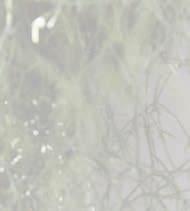











































 Photo: Midge Wattles. © Solomon R. Guggenheim Foundation, NewYork
Photo: Midge Wattles. © Solomon R. Guggenheim Foundation, NewYork


















 With titles like “Bad Lemon” and “Fool’s Mold,” the sculptures of artist Kathleen Ryan feature simple glass beads interspersed with semi-precious gemstones, challenging the perceptions of both decoration and decay, in juicy, smack-you-in-the-face color.
With titles like “Bad Lemon” and “Fool’s Mold,” the sculptures of artist Kathleen Ryan feature simple glass beads interspersed with semi-precious gemstones, challenging the perceptions of both decoration and decay, in juicy, smack-you-in-the-face color.







 At left: A student of Le Corbusier in Paris and Louis Kahn in America, celebrated Indian architect BV Doshi built over 100 projects, from the most luxurious digs to this incredible take on affordable housing, and is widely considered the pioneer of modernist and brutalist architecture in India.
At left: Digital sculptor/artist Ken Kelleher is a MUST FOLLOW on Instagram, under @anchorball. He says of his sculpting method: “The first part of my practice is always experimenting. The second part of my practice is conceiving of pieces I haven’t seen created before.” Beyond the digital world where his monumental pieces reside, real-life public space art is said to be in the works.
Photographer Tommy Kwak’s collection of Miami’s lifeguard stands (available in his new book) showcases these gumdrop structures in their delicious glory, all colorful trim, railings, angles, and roofs. Oh, and by the way? The book’s pages are edged in pink. How’s that for a trip to Fantasyland?
At left: A student of Le Corbusier in Paris and Louis Kahn in America, celebrated Indian architect BV Doshi built over 100 projects, from the most luxurious digs to this incredible take on affordable housing, and is widely considered the pioneer of modernist and brutalist architecture in India.
At left: Digital sculptor/artist Ken Kelleher is a MUST FOLLOW on Instagram, under @anchorball. He says of his sculpting method: “The first part of my practice is always experimenting. The second part of my practice is conceiving of pieces I haven’t seen created before.” Beyond the digital world where his monumental pieces reside, real-life public space art is said to be in the works.
Photographer Tommy Kwak’s collection of Miami’s lifeguard stands (available in his new book) showcases these gumdrop structures in their delicious glory, all colorful trim, railings, angles, and roofs. Oh, and by the way? The book’s pages are edged in pink. How’s that for a trip to Fantasyland?













 British duo Mulvany & Rogers showcase their master craft in the two miniature kitchens pictured here and below. “We aim to recreate an atmosphere and energy, to give the feeling that someone has only just left the room.”
British duo Mulvany & Rogers showcase their master craft in the two miniature kitchens pictured here and below. “We aim to recreate an atmosphere and energy, to give the feeling that someone has only just left the room.”
















 With three locations in and around Portland, Oregon, and one in New York’s NoLita neighborhood (above), The Meadow has made a business out of selling all manner of salt (including Himalayan salt rounds), chocolate, bitters, and flowers in comfy environments like this.
With three locations in and around Portland, Oregon, and one in New York’s NoLita neighborhood (above), The Meadow has made a business out of selling all manner of salt (including Himalayan salt rounds), chocolate, bitters, and flowers in comfy environments like this.



 Clockwise from upper left, here’s a look at the innovativeartwe love right now.
Clockwise from upper left, here’s a look at the innovativeartwe love right now.


 This page, top to bottom: We’re bananas for Dean Barger’s wall murals, shown here at Le CouCou and Veronika. Opposite page: a private client install shows a mural is more than wallpaper and a helluva lot more #OMG than even the freshest paint job.
This page, top to bottom: We’re bananas for Dean Barger’s wall murals, shown here at Le CouCou and Veronika. Opposite page: a private client install shows a mural is more than wallpaper and a helluva lot more #OMG than even the freshest paint job.
























 From left to right, a few of Rima Suqi’s recent IG images (this being a hotel/guest house in Portugal, Casa na Terra). Below, the dark, captivating, and splendid squalor of Jason Baker’s shots on his IG highlight lost locales.
From left to right, a Steven Arnold print from his collection. The artist fashioned most of the props etc. for his shoots himself from household items, paper, and cardboard; TK Wonder and Cipriana, AKA, the Quann sisters; Tanja Brandt’s dog Ingo and a pal.
@TANJA_BRANDT
@JASONBAKERPHOTOGRAPHY
From left to right, a few of Rima Suqi’s recent IG images (this being a hotel/guest house in Portugal, Casa na Terra). Below, the dark, captivating, and splendid squalor of Jason Baker’s shots on his IG highlight lost locales.
From left to right, a Steven Arnold print from his collection. The artist fashioned most of the props etc. for his shoots himself from household items, paper, and cardboard; TK Wonder and Cipriana, AKA, the Quann sisters; Tanja Brandt’s dog Ingo and a pal.
@TANJA_BRANDT
@JASONBAKERPHOTOGRAPHY









































 Long live the Queen of the Skies! Its distinctive hump made the 747 instantly recognizable—and will give the remaining planes longevity as cargo carriers.
Long live the Queen of the Skies! Its distinctive hump made the 747 instantly recognizable—and will give the remaining planes longevity as cargo carriers.











